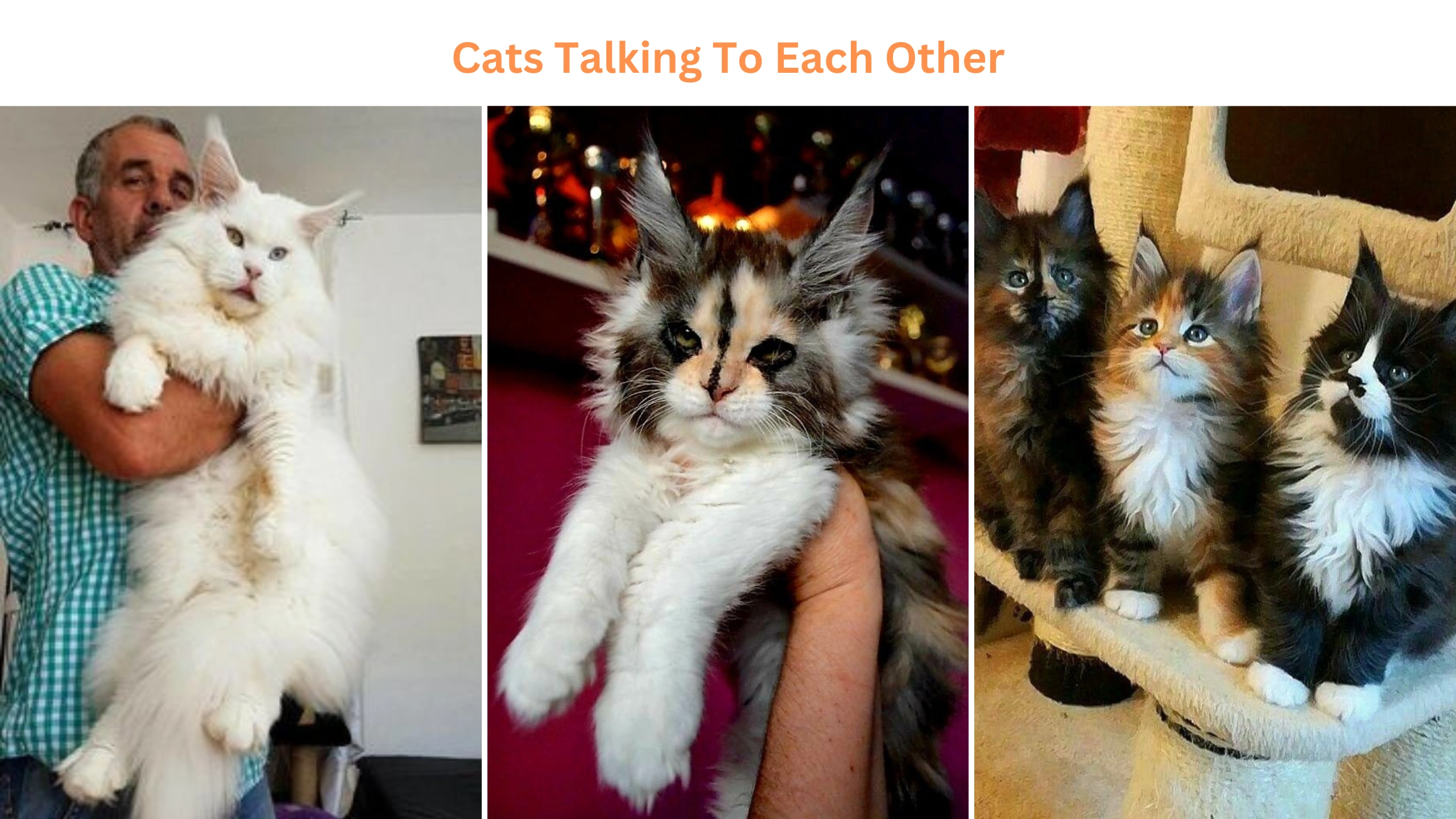Last Updated on February 6, 2024 by Aftab Tariq
Cats talking to each other involves a complex interplay of feline communication, where felines employ various body language and vocalizations. When cats engage in conversation, they utilize subtle cues and specific eye movements to convey their messages to their fellow cats.
These nuanced features of communication create a unique dialogue among the interacting cats. Through their distinctive movements and vocalizations, cats establish a form of contact that goes beyond mere verbal expression.
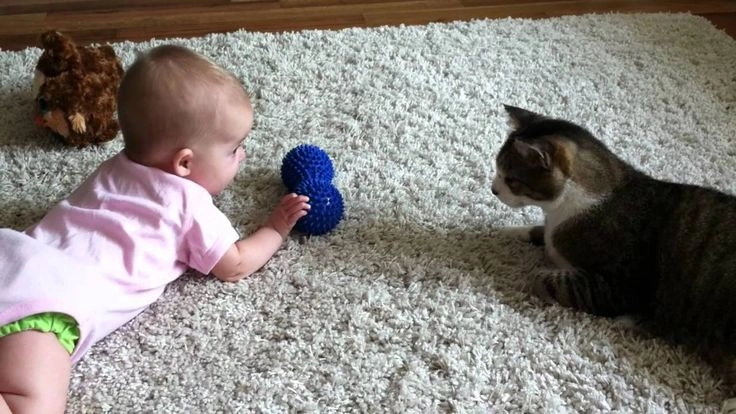
In interspecies communication, it’s interesting to note how cats also respond to the cues of other animals, such as dogs. Cats employ a shared language that goes beyond species boundaries in these interactions.
Each cat in a group contributes to the overall conversation, emphasizing the significance of each individual’s role in exchanging information. As they engage with their peers, cats utilize various forms of signalling to ensure a harmonious conversation.
Whether through subtle body language or distinct vocalizations, the communication between cats underscores the importance of understanding the rich tapestry of their language. Sir Walter Scott once said:
“Cats are a mysterious kind of folk…”
Cats have changed the way they meow to be more likable to humans, says Cornell University research. They’ve figured out that using friendly meows helps them grab attention and get food.
The study compares modern pet cats to wild African cats, suggesting that less charming sounds kept the wild ones untamed. Domestic cats, on the other hand, have adapted by using nicer meows to communicate and meet their needs with humans.
1: Body Language in Cat Communication
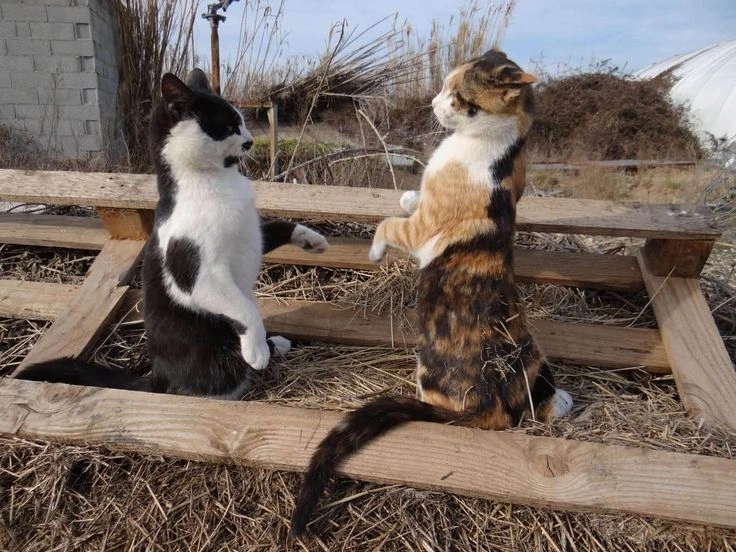
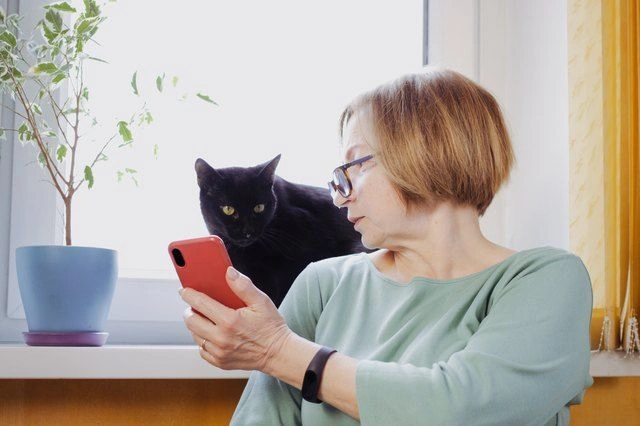
Sound production is a fundamental aspect of cat talk, and cats utilize various vocalizations to communicate. Among these, the gentle hum of a cat purring is a common and soothing expression. Cats employ different vocalizations, such as the distinctive meow, a versatile sound used for diverse interactions with humans and other cats.
Interestingly, research suggests that cats also produce certain sounds during an attack, involving a combination of inhalation and exhalation. Understanding the diverse vocalizations in cat talk is crucial for interpreting how cats express themselves through gentle purrs, friendly trills, or more assertive yowls.
3: Interactions Between Cats Via Touch
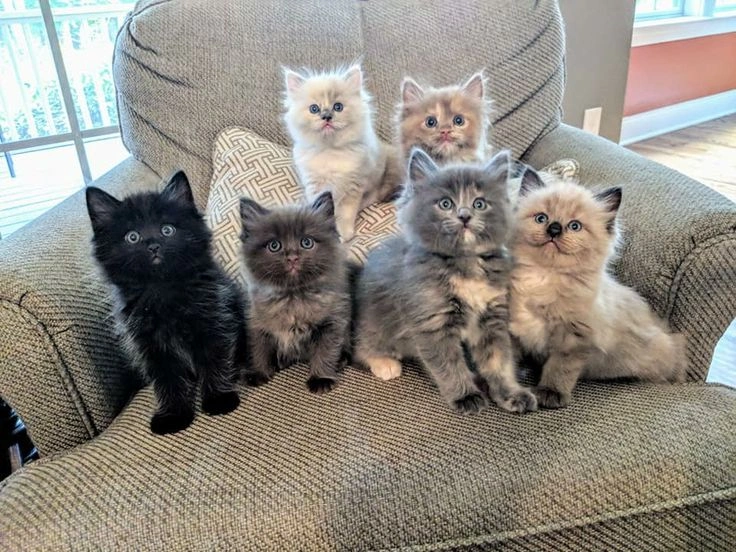
Interactions between cats via touch involve a delicate dance of feline communication. The exchange of affection is often manifested through gentle strokes along the backs and sides of the interacting cats. The cats’ bodies may intertwine as they engage, creating a tactile connection beyond mere proximity.
Head and nose touch further signify closeness and bonding during these social moments. Each cat contributes to the interaction, offering their unique touch to the dynamic. The contact areas on their bodies, including the heads, backs, and sides, become focal points in this tactile language. Haruki Murakami says :
“While cats weave a silent tapestry of connection through delicate touches, they teach us the art of communication without words, revealing the profound beauty in the language of touch.”
Cats establish trust and camaraderie through these nuanced touches, strengthening the social bonds integral to their feline nature. The gentle intertwining of tails in these interactions adds another layer to the intricate choreography of communication that defines the rich tapestry of cat-to-cat connections.
4: Chemical Marking and Communication in Cats
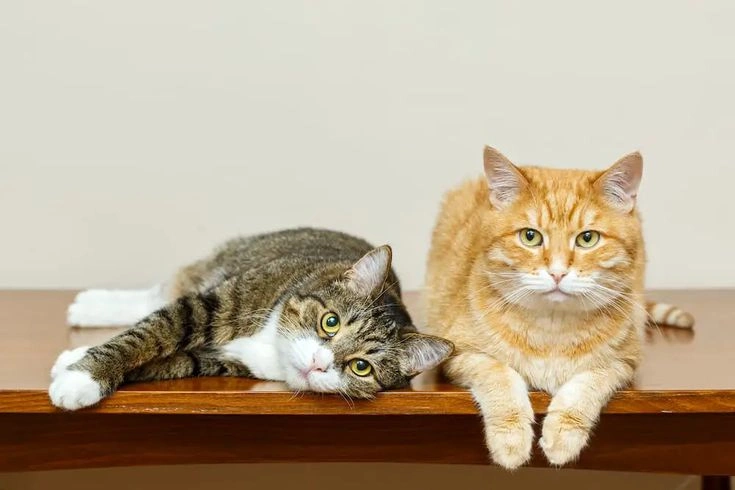
Chemical marking and communication in cats is a fascinating aspect of their social behavior. Cats employ various means to leave their olfactory mark, using their scent glands strategically on cheeks, chins, foreheads, and tails.
When cats rub against objects, people, or even other cats, they transfer oils containing pheromones, creating a distinctive scent trail. This intricate cat language allows them to convey important signals related to their emotions, territory, and interactions. Spraying urine is a notable method of marking territory and expressing responses to environmental stressors.
Objects within the house become carriers of these scents, creating a dynamic landscape of chemical communication. Cats talking to each other through these olfactory cues engage in a subtle yet intricate dialogue, as each feline contributes to this aromatic tapestry, marking their immediate surroundings and outdoor areas to establish a broader sense of territory.
This exchange, where cats talking to each other through scent, plays a crucial role in their social interactions and the intricate dance of feline communication within their shared environment. Understanding the significance of chemical marking sheds light on how cats navigate their social life and interact with their environment.
5: Chemical Cues to Leave Messages
Cats talk to each other using smells. When your cat rubs against things or people, it’s leaving a special scent called pheromones. These scents help cats recognize each other as part of their group, like a secret language. It’s not just for strangers; sometimes, cats may even do this to family members.

Also, when your cat rubs on stuff at home, it’s saying, “This is mine!” It’s marking its territory with its smell. So, when your furry friend does this, it’s their way of communicating through scent.
Cats use various methods to mark their territory, not just by spraying urine. While outdoor cats are more likely to exhibit these behaviors, indoor cats may also engage in territorial marking when stressed. Stressors such as moving to a new home, the presence of stray cats, or living in close quarters with multiple cats can trigger this behavior.
Cats communicate in various ways to express their feelings, with their interactions often resembling “cats talking to each other meaning.” They use visual signs like body language for relaxation, fear, or aggression.
Through actions like grooming or biting, they also convey messages using touch. Cats even mark their territory by urinating, using smell to communicate.
Cats Talking to Each Other Youtube Video
Note: Observe your cats’ interactions closely and try to interpret their signals now that you have some knowledge of feline communication.
Frequently Asked Questions
Why Do Some Cats Talk Like Humans?
While videos of cats talking to each other like humans are frequently shared online, it’s important to understand that cats can’t actually speak human language due to differences in their vocal tracts.
Animal behavior experts explain that what might seem like cats talking to each other like humans is actually them modifying their “meow” sounds to imitate certain human words in these videos.
How Do Cats Sound When They Talk to Each Other?
Sources
Do you understand what your cat is saying
How the new feline science can make you a better friend to your pet
The behavior of the domestic cat
How to speak cat : a guide to decoding cat language
The domestic cat : the biology of its behavior
The original Cat fancy cat bible
Journal of comparative psychology
I am a dedicated content writer with more than five years of experience, particularly skilled in the art of storytelling. My writing journey commenced during my college years, where I pursued journalism and unearthed my talent for creating captivating narratives.

